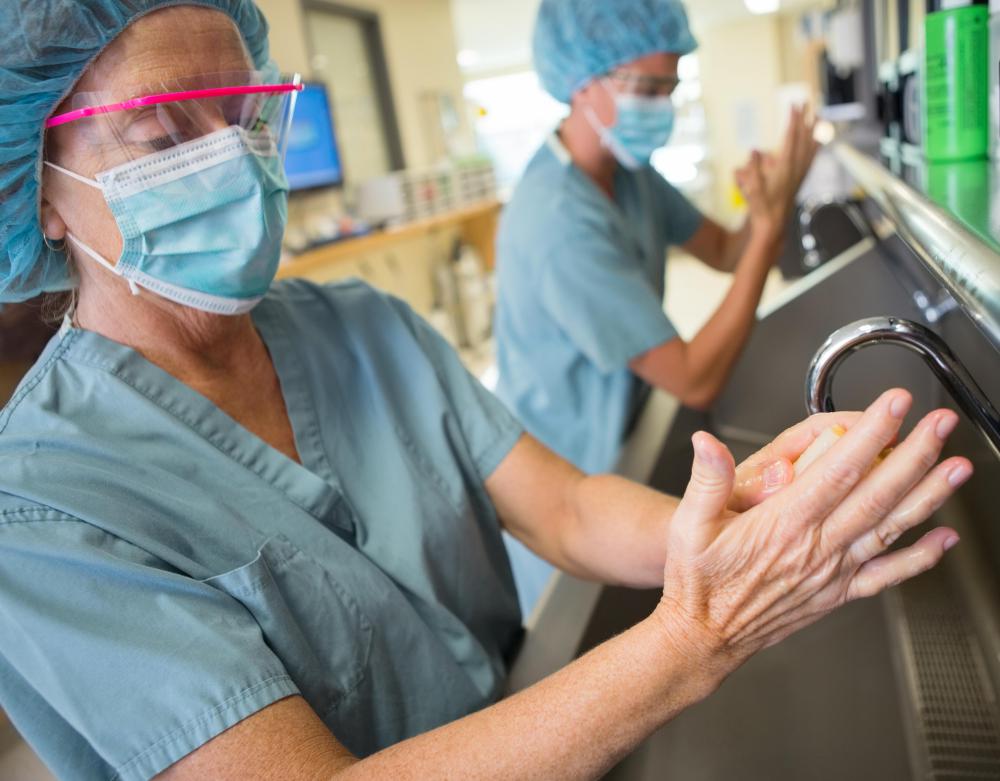At TheHealthBoard, we're committed to delivering accurate, trustworthy information. Our expert-authored content is rigorously fact-checked and sourced from credible authorities. Discover how we uphold the highest standards in providing you with reliable knowledge.
What is an Aortic Graft?
An aortic graft is a surgical procedure used to repair a damaged section of aorta. In most cases, this procedure is used to repair or bypass a section of the artery that has an aneurysm. Left untreated, an aneurysm on the aorta can burst, posing an extremely high risk of mortality for the patient. The aortic graft can be completed using a section from one of the patient’s own blood vessels, the blood vessel of a cadaver, or a number of synthetic materials.
A common procedure used to attach an aortic graft is one that involves replacing a damaged section of aorta. In this type of surgery, the doctor will bypass the aorta for the duration of the surgery. The damaged section is then cut out of the aorta and the graft is sewn into place. The material used in this type of graft is often a stent that consists of a flexible tube of fabric with a rigid metal frame inside it. Alternatively, such a graft can be made from a donor blood vessel, either from one of the patient’s own vessels or from a cadaver.

Another type of surgery uses an endovascular stent graft. This surgery is less invasive than the traditional arterial grafting surgery. In this procedure, a hollow tube is fed into the aorta until it reaches the section damaged by aneurysm. The tube is then inflated until it fits snugly within the artery. The synthetic graft on the inside of the damaged section of aorta supports the artery and protects it from the effects of blood pressure, which can eventually lead to the rupture of the aneurysm.

After a patient receives an aortic graft, there is a chance that an infection can develop. These infections are serious and can put the patient’s life at risk. It is also possible for clots to form along the walls of the graft, which can require subsequent surgery or treatment. Complications are more likely to arise when a graft is made from synthetic materials than if a patient’s own blood vessels are used in the graft.

Aneurysm is a common condition and is the primary reason that a patient receives an aortic graft. It is also possible to receive a graft if there is significant blockage in the aorta, though there are other procedures a doctor may try before using an invasive surgery. Patients with a rare condition called Marfan syndrome may also receive an aortic graft as a part of treatment. In this condition, the walls of the aorta are thin, and the risk of developing an aneurysm is extremely high.
AS FEATURED ON:
AS FEATURED ON:















Discuss this Article
Post your comments